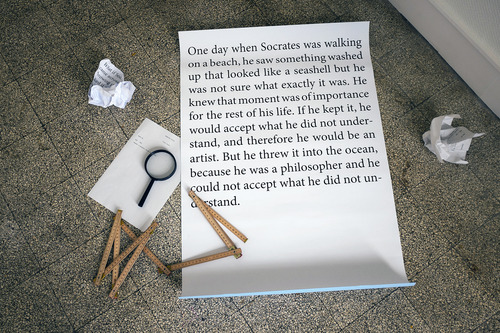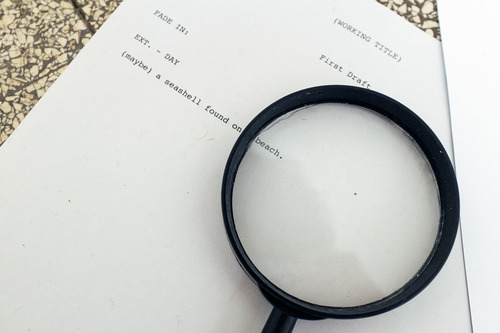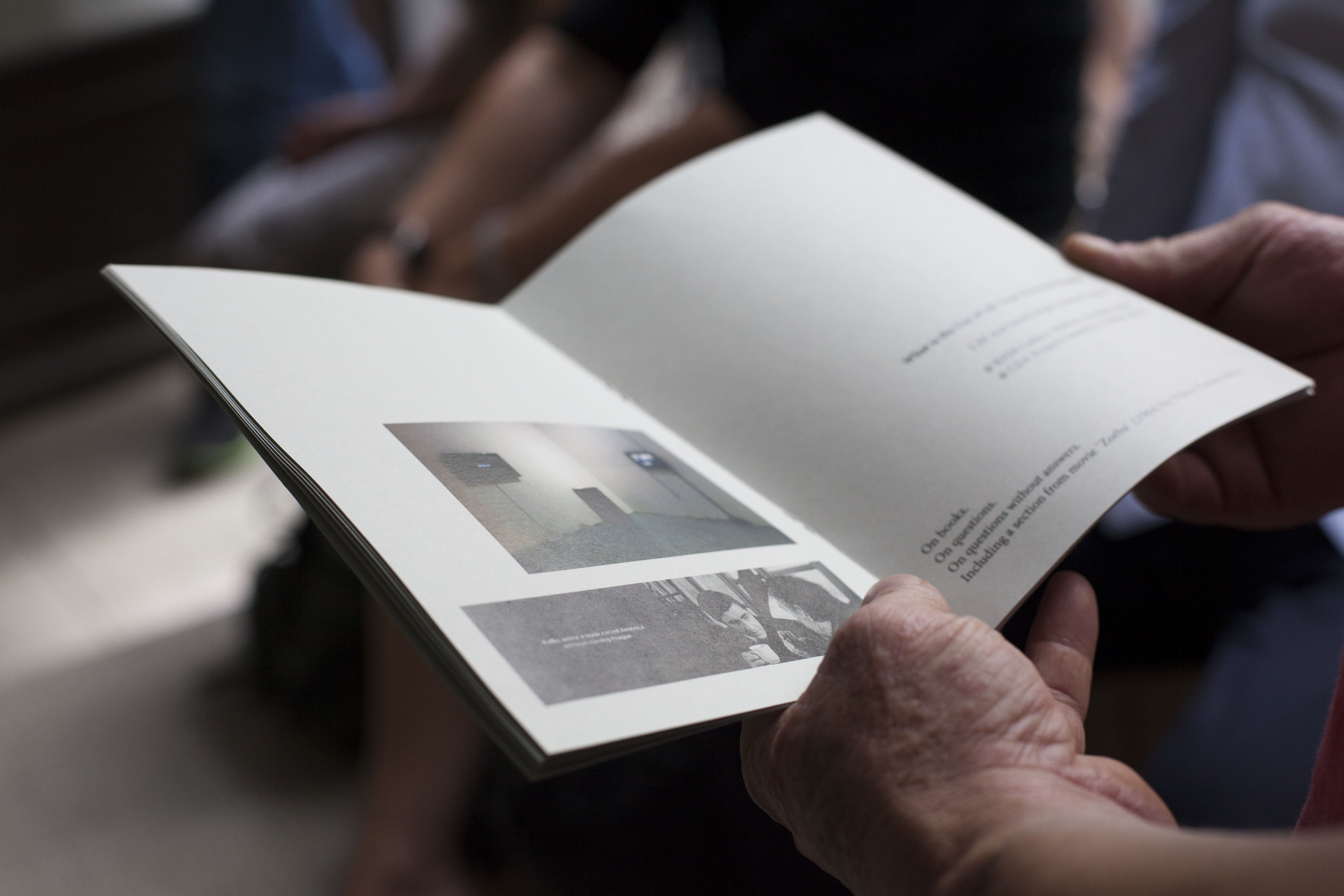Open work
Mixed-media installation
inkjet print 80x120cm, poster 80x120cm, magnifying glass, wood measure, script on crumpled paper
HEAD – Genève Work.Master, MFA graduation work
Geneva, 2013
Our opening story takes place like this: One day when Socrates was walking over a beach, he saw something washed up that looked like a seashell but he was not sure what exactly it was. He knew that moment was of importance for the rest of his life. If he kept it, he would accept what he did not understand, and therefore he would be an artist. But he threw it into the ocean, because he was a philosopher and he could not accept what he did not understand. Based on the story, Eupalinos or the architect: Collected works of Paul Valéry Dialogue (1956) Paul Valéry writes about the difference between artist and philosopher via a story of Socrates. This story raises a various questions around determinacy and openness in both the artwork position of the artist.
When creating art and orchestrating its reception within the idea of the open work, or what we might call objecTransivity, an entirely understandable approach to art becomes unnecessary. Some of the most important functions of an artwork can be to stir up an experience, emotion or possibility of a thought that is not yet materially explicit but left open to the imagination. In this sense, when a work of art is physically finished, it is not yet literally complete. It can reach various possible stages from the most pragmatic to the spiritual whil admitting that sometimes there is no difference between the two. This can be an alternative answer to the question “When is a work of art supposed to be complete?” My belief is that it may never be — and better left “open” rather than resolved. Socrates’ story is a challenging one. It puts the position of artist and philosopher as very close to each other, and sets a firm boundary around the notion of “that which can be understood”. This in turn somehow confronts me with the possibility of playing with lines and distinctions while reaffirming art’s prerogative to not be understood or left open. What consequences does this imply, not so much for the reception of the work, but for its production and inherent fluctuating state?








Photos: Öncü Hrant Gültekin